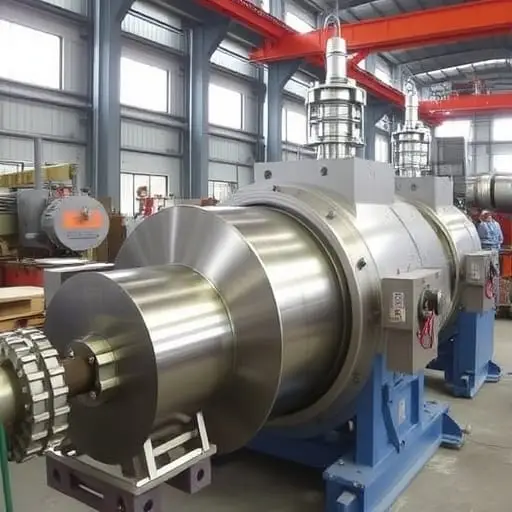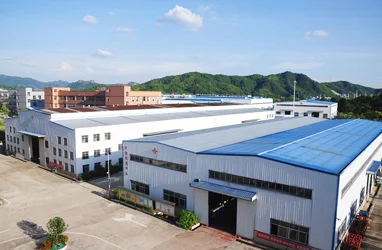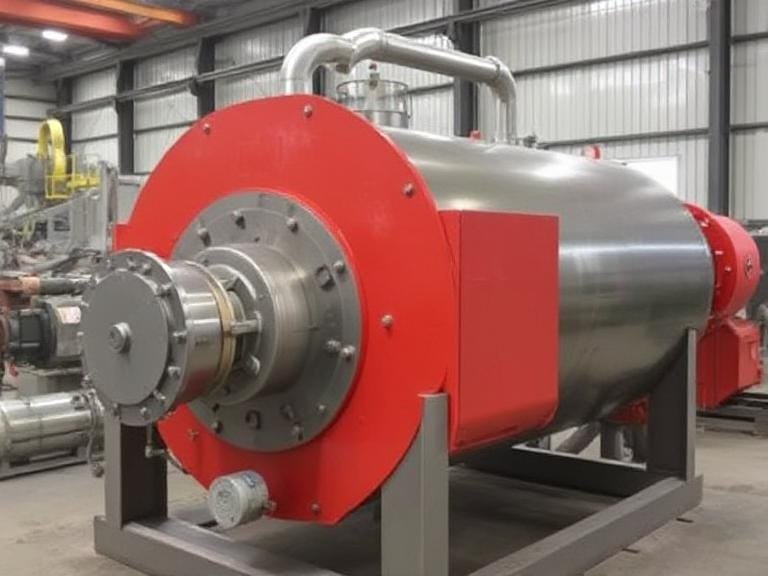Magnetic Separation Process: An In-Depth Guide
Table of Contents
- Introduction to Magnetic Separation
- How Magnetic Separation Works
- 2.1 Magnetic Fields and Their Role
- 2.2 Types of Magnetic Separation
- 2.2.1 Wet Magnetic Separation
- 2.2.2 Dry Magnetic Separation
- Applications of Magnetic Separation
- Oromineral Magnetic Separation Machines: Features & Benefits
- 4.1 1.1kw Belt Magnetic Separator
- 4.2 Dry Electromagnetic Separator
- 4.3 Permanent Magnetic Separator
- Advantages of Magnetic Separation
- Factors Affecting the Efficiency of Magnetic Separation
- Frequently Asked Questions (FAQs)
- Conclusion: Why Choose Magnetic Separation for Your Industry
Introduction to Magnetic Separation
Magnetic separation is a highly effective method of separating magnetic materials from non-magnetic substances. It is commonly used in various industries such as mining, recycling, food processing, and environmental management to isolate valuable or harmful components in materials. The process relies on the principles of magnetism to differentiate between magnetic and non-magnetic materials, making it an essential tool for enhancing material purity, improving efficiency, and increasing product quality.

This article will explore the magnetic separation process, its working principle, types, applications, and the features of advanced magnetic separation machines such as the Oromineral magnetic separation equipment.
How Magnetic Separation Works
Magnetic separation involves using magnets to attract magnetic particles in a mixture, thereby separating them from non-magnetic substances. This process is based on the varying magnetic properties of different materials.
2.1 Magnetic Fields and Their Role
Magnetic fields are areas where magnetic forces are felt. When a material is exposed to a magnetic field, magnetic materials within the substance will experience an attractive force. The strength of the magnetic field determines how well the material can attract and separate magnetic particles. Stronger magnets or higher magnetic field strengths result in better separation efficiency.
2.2 Types of Magnetic Separation
There are several methods of magnetic separation based on the state of the material being processed (wet or dry) and the type of separator used.
2.2.1 Wet Magnetic Separation

Wet magnetic separation uses water or other liquids to help separate materials. The mixture is passed through a magnetic separator while submerged in water, which helps carry away lighter, non-magnetic materials. This method is most often used when working with fine particles or when the target material is in a slurry form. Wet magnetic separators are particularly useful for applications involving minerals like iron ore, where the desired magnetic material is mixed with water.
Advantages:
- High efficiency for fine particle separation
- Better for materials that need to remain wet during processing
- Reduced dust and airborne contamination
Applications:
- Mineral processing (e.g., iron ore, coal)
- Food processing (e.g., separating metal contaminants from food products)
2.2.2 Dry Magnetic Separation
Dry magnetic separation does not require any liquid medium and is typically used for dry materials. In this process, the material is passed through a magnetic field, and the magnetic particles are drawn away from the non-magnetic ones. This method is commonly used for materials that do not require water or any fluid medium during processing.
Advantages:
- Ideal for large volumes of dry materials
- More energy-efficient than wet separation
- No need for water or chemicals
Applications:
- Mining (e.g., removing iron from non-metallic ores)
- Recycling (e.g., separating metals from waste materials)
Applications of Magnetic Separation
Magnetic separation has wide applications across several industries. Some of the most common areas where it is utilized include:
- Mining and Mineral Processing:
- Magnetic separation is widely used to extract valuable minerals from ores, especially when dealing with ores containing magnetic materials like iron, magnetite, and hematite.
- It is used to remove impurities and contaminants from raw materials, improving the quality of the final product.
- Recycling:
- Magnetic separation is used to extract ferrous metals from waste materials, such as discarded electronics, automobiles, or scrap metal.
- It helps separate valuable metals from non-metallic components in waste streams.
- Food Processing:
- In the food industry, magnetic separation is used to remove metal contaminants from food products like grains, nuts, and dried fruits.
- It helps maintain food quality and safety by preventing metal contamination.
- Environmental Management:
- Magnetic separation plays a role in cleaning up contaminated water or soil by removing ferrous metals and other magnetic pollutants.
- It is often used in water treatment plants and waste management facilities.
Oromineral Magnetic Separation Machines: Features & Benefits

Oromineral offers a range of high-quality magnetic separation machines designed to enhance the efficiency and accuracy of material separation processes. Their products cater to industries such as mining, recycling, food processing, and more.
4.1 1.1kw Belt Magnetic Separator

The 1.1kw Belt Magnetic Separator is an advanced machine designed for continuous separation of ferrous metals from non-metallic materials. It features a powerful electromagnetic system that ensures high performance and durability, making it ideal for large-scale industrial use.
Key Features:
- 1.1kw power motor for consistent and efficient operation
- Belt-driven mechanism for smooth separation
- High magnetic field strength for effective metal removal
- Durable and robust design suitable for heavy-duty operations
Applications:
- Metal recycling plants
- Iron ore processing
- Food safety and contamination prevention
4.2 Dry Electromagnetic Separator

The Dry Electromagnetic Separator is specifically designed for dry separation of magnetic materials. It uses an electromagnetic field to separate ferrous metals from bulk materials without the need for water or chemicals. This makes it a highly efficient and eco-friendly solution.
Key Features:
- Energy-efficient dry separation
- High-intensity electromagnetic field for maximum separation efficiency
- Low maintenance and easy to operate
- Ideal for fine and coarse materials
Applications:
- Mining and mineral processing
- Recycling industries
- Automotive scrap processing
4.3 Permanent Magnetic Separator

The Permanent Magnetic Separator uses permanent magnets to generate a magnetic field. These separators are highly durable, require little maintenance, and are highly effective for separating magnetic materials from non-magnetic ones. They are particularly suitable for handling large volumes of materials.
Key Features:
- Permanent magnets for consistent performance
- No need for external power supply
- Ideal for high-volume applications
- Robust design for long-term reliability
Applications:
- Large-scale metal extraction
- Food and beverage manufacturing
- Plastics recycling
Advantages of Magnetic Separation
Magnetic separation offers several significant advantages, making it a preferred method for separating materials across industries:
- Efficient Separation:
- Magnetic separation is highly effective in isolating ferrous materials from non-ferrous substances, improving the purity of the final product.
- Eco-Friendly:
- As a dry separation process, it reduces water and chemical usage, making it an environmentally friendly solution.
- Cost-Effective:
- It can help reduce operational costs by eliminating the need for chemicals and additional processing equipment.
- High Capacity:
- Magnetic separators are available in various sizes and capacities, allowing for efficient processing of large quantities of materials.
- Improved Product Quality:
- By removing impurities and contaminants, magnetic separation enhances the quality of materials, making them suitable for higher-value applications.
Factors Affecting the Efficiency of Magnetic Separation
While magnetic separation is highly effective, certain factors can influence its efficiency, including:
- Magnetic Field Strength: The intensity of the magnetic field plays a critical role in the separation efficiency. A stronger magnetic field will capture more magnetic particles.
- Particle Size: Smaller particles are harder to separate, requiring more powerful magnetic fields or specialized equipment.
- Material Composition: The magnetic properties of the material being processed will affect the separation process.
- Separation Speed: Faster processing times may reduce the efficiency of separation, especially for fine particles.
Frequently Asked Questions (FAQs)
Q1: How does a magnetic separator work?
A1: A magnetic separator works by using a magnetic field to attract ferrous or magnetic particles from a mixture, effectively separating them from non-magnetic materials. The materials are passed through a magnetic field, where the magnetic particles are pulled away, leaving the non-magnetic materials behind.
Q2: Can magnetic separation be used for all types of materials?
A2: Magnetic separation is effective for separating magnetic materials, such as iron or steel, from non-magnetic substances. It is most commonly used for ferrous metals but can also be used for certain non-ferrous metals and minerals with specialized equipment.
Q3: What are the benefits of dry magnetic separation?
A3: Dry magnetic separation eliminates the need for water or chemicals, making it more environmentally friendly and cost-effective. It is ideal for
dry materials and is suitable for large-scale industrial operations.
Conclusion: Why Choose Magnetic Separation for Your Industry
Magnetic separation is an indispensable technology in many industries, offering a range of benefits such as improved product quality, cost savings, and environmental sustainability. By selecting the right magnetic separator for your application, such as those offered by Oromineral, you can enhance your production efficiency and ensure the purity of your final products. With machines tailored for various needs, including 1.1kw Belt Magnetic Separators, Dry Electromagnetic Separators, and Permanent Magnetic Separators, Oromineral provides high-performance solutions that meet global industry standards.
Whether you’re in mining, recycling, food processing, or any other industry requiring material separation, magnetic separation remains one of the most effective and reliable methods for achieving optimal results.





